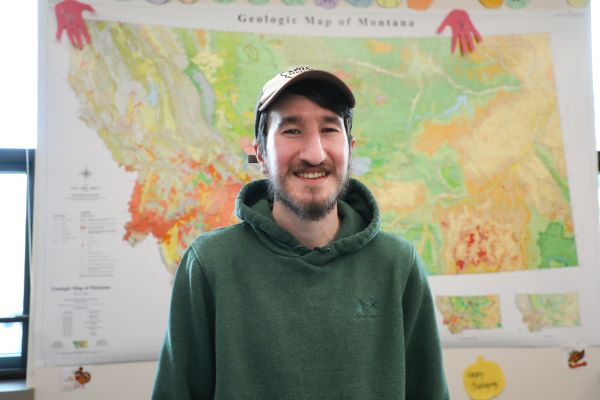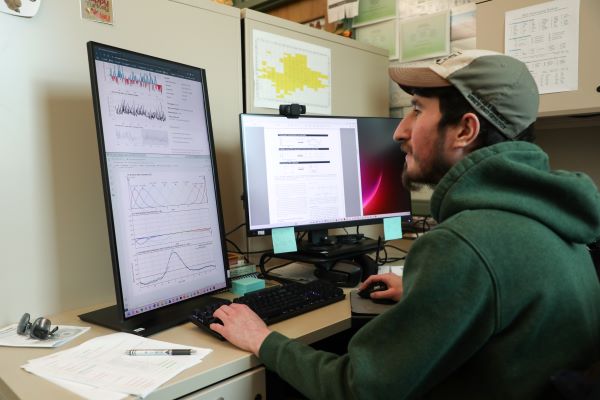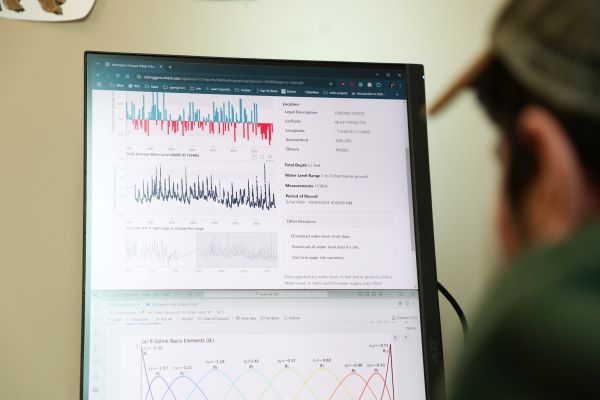70 million rows: Montana Tech data science alumnus makes sense of what’s going on with State’s groundwater

The Montana Bureau of Mines and Geology (MBMG) has been collecting and storing data about the State’s geological, mineral, energy, and water resources for over 100 years, and it takes a team of dedicated scientists to organize, analyze, and present that data in a way that benefits humanity.
Daniel Buckley, (B.S. Data Science, ’22; M.S. Geoscience, ’24) is part of that team and spends his days working as a data scientist. Buckley uses a suite of tools to analyze MBMG data and answer questions about Montana’s groundwater.

One of his recent projects explored potential causes of declining groundwater levels in the Bitterroot Valley. His analysis showed that the drying climate was likely the main cause. He’s now studying the annual behavior of groundwater levels in Montana, how those levels change seasonally, and what behavioral patterns occur across the State.
The MBMG’s datasets often contain thousands of pieces of information. Buckley says the largest dataset available to him has around 70 million rows.

Because the MBMG has a small development team, Buckley’s work involves a little bit of everything. In addition to crunching numbers and running statistics, he’s helped do data visualizations, presentations of analytical data, and some web development tasks. He also occasionally gets to do fieldwork. One project allowed him to sample the highly toxic Berkeley Pit with a remote-controlled boat designed to gather information safely, without a human passenger.
Buckley says data science is a gateway to all kinds of opportunities.
“A data science degree is more of a door opener,” Buckley said. “It doesn’t lead to any one path. Data science is a pretty broad field that includes everything from storing and managing data to analyzing and visualizing that same data.”
Data scientists are proficient in not only statistics, but also computer programming.
“You have to be able to write good code, and write good tests for your code,” Buckley said.
There is plenty of work to be done out there. The Bureau of Labor Statistics (BLS) expects the demand for data scientists to increase by 36% over the next decade. The BLS reports that the median annual salary of a data scientist in the U.S. in 2023 was $108,020.
“There’s plenty of data and we need people to be able to work with the data, to understand it and communicate it in a way that makes sense and is not any sort of misrepresentation,” Buckley said. “A carpenter doesn’t buy tools just to sit there and admire them. He goes out and he builds stuff with his tools. So, go find somewhere there’s data, maybe where people don’t necessarily have the training to analyze it properly, and use your tools.”